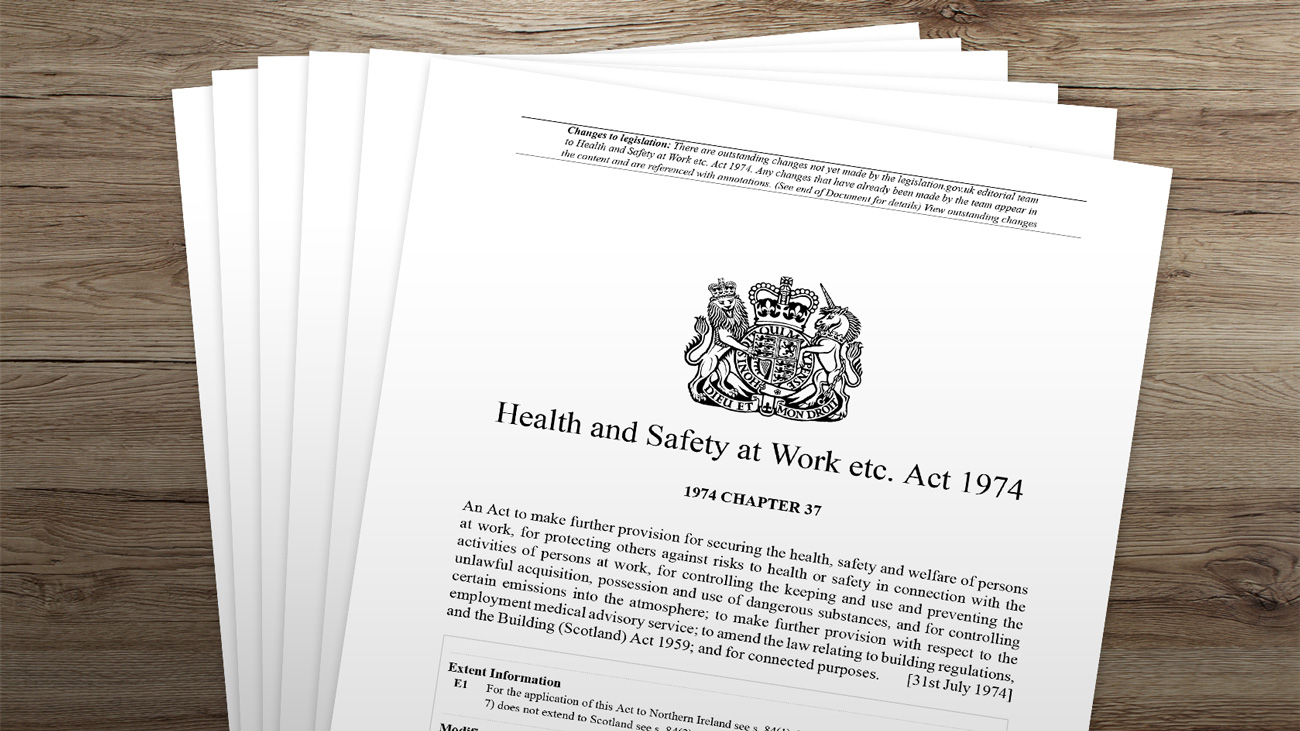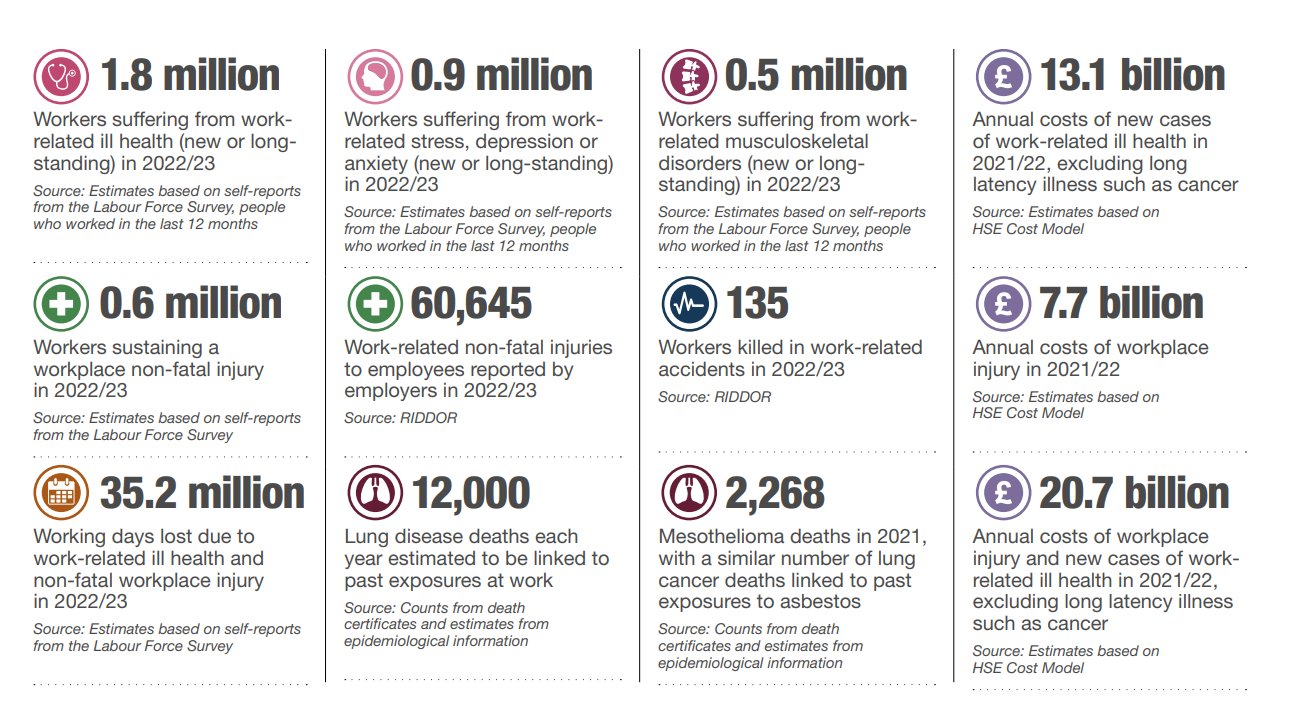
The Health and Safety at Work Act – 50 years on
There’s a big birthday coming up. The Health and Safety at Work Act 1974 is soon to be 50 years old. Where has the time gone? Pam Loch, Solicitor and Managing Director of Loch Associates, and Amy White, Head of Loch Training and Wellbeing, look at what’s changed in the world of health and safety.
When it was first introduced, the Health and Safety at Work etc. Act 1974 was described as “a bold and far-reaching piece of legislation” by the HSE’s first Director General, John Locke. It certainly marked a departure from what had come before. Previous health and safety legislation had adopted a prescriptive approach within a highly regulated framework. The new legislation, however, took a more outcome-oriented tact, focusing on goals and guidance and promoting the engagement of employers and employees alike.
Over the past five decades, the Act has significantly shaped the landscape of workplace welfare and the protection of staff safety. It paved the way for the creation of the Health and Safety Commission, it assisted in establishing the Health and Safety Executive (HSE) and it has markedly changed the way we in England and Wales (and, arguably, beyond) look after our workforces.
But its work is not yet done. Challenges keep coming and trials and tribulations keep tripping us up (excuse the pun…), so it’s worth taking a step back and reminding ourselves what the legislation is all about and how it might continue to guide us as we go into the next 50 years.
The primary principles
The Health and Safety at Work etc. Act 1974 seeks, as its primary aim, to ensure the health, safety and welfare of individuals at work. It imposes a legal duty on employers to protect the health and wellbeing of their staff and mitigate risks to the same.
But don’t be fooled into thinking the responsibility lies solely with the employer. Individual employees are also required to take reasonable care of their own health and safety, as well as that of others who may be affected by their actions at work. The Act is premised on the belief that health and safety at work is everyone’s responsibility – we’re all in this together.
So, while an employer might have a duty to provide appropriate health and safety training, distribute suitable protective equipment and ensure all facilities meet minimum safety levels (including in relation to matters such as ventilation, temperature and noise levels), employees, in turn, are required to take reasonable care of their own health and safety by attending training, refraining from interfering with or misusing health and safety equipment and reporting any illnesses or injuries that might affect their ability to work safely. It’s a joint effort that’s required and everyone carries a degree of responsibility.
Alongside the Act itself, there are plenty of additional regulations that help keep our workplaces and workforces safe and that need to be complied with, many of which have been introduced to account for the changing landscape in which the Act has been operating from its inception in the 1970s, when our economy was primarily focused on heavy industry and manufacturing, to our modern, service and technology-driven economic outlook.
The principal changes
Much has changed since the Act was introduced. Not only has the economy itself undergone a full-blown transformation, attitudes to workplace safety and employee welfare have also been completely overhauled.
Significantly, the advent and introduction of technology has transformed the world of work since the Act came into force, requiring new regulations to address new risks and ensure the benefits of such technology could be safely embraced. And while it might be easy to think the biggest changes are already behind us where technological developments in the workplace are concerned, the reality is we’ve probably only just scratched the surface. AI (artificial intelligence) is set to transform our workplaces and ways of working, not only by presenting new challenges where health and safety is concerned, but also by affording new opportunities for achieving higher levels of staff welfare (think AI systems which can detect the use or misuse of safety equipment, 3D visualisation training platforms and monitoring devices to alert employers to staff who are in trouble or unwell).
Alongside the introduction of new technology, the Act has also had to acknowledge that some of the biggest risks to staff health, safety and welfare presented by our modern workplaces, concern mental, rather than physical, health. While in the past there was a tendency to think of health and safety legislation as focused on addressing physical hazards to prevent physical injuries, employers now need to adopt a more holistic view, remembering that less-tangible aspects of a working environment, such as management style, culture and workload, can actually have a detrimental impact on the health and wellbeing of individual members of staff and need to be addressed with equal priority. Of note in this regard, is that a private members’ bill seeking to make mental health first aid a compulsory workplace requirement on equal footing with physical first aid, is currently working its way through parliament, with its second reading due in November 2023.
Finally, we couldn’t fail to mention the elephant in the room – COVID-19. If we ever needed reminding of the importance of health and safety measures in the workplace, the pandemic certainly achieved that aim. Not only did employers have to adapt to new and unforeseen risks to ensure the safety and welfare of their staff, they had to do so effectively overnight. And many turned to the HSE and the Act for a steer, to ensure they understood their responsibilities and that the actions they were proposing were sensible, suitable and safe.
To sum up
The Act definitely deserves a pat on the back. While it’s often criticised for being overly restrictive and cursed for inhibiting business, the reality is, it’s worked. According to Safety Management, for example, in its first 40 years, the Act was responsible for an 85% reduction in fatal injuries at work and a 77% reduction in total injuries. Like it or loathe it, it’s done remarkably good work since it came into force.
That said, it certainly can’t afford to sit back and relax into retirement just yet. As the workplace continues to change and develop, whether as a result of transformative technologies, mounting mental health mindfulness or a presently unknown threat, the Act will also have to evolve to guide employers and keep employees safe and well.
In 2014, we produced a film on 40 years of the Health and Safety at Work Act. You can watch this video here.







